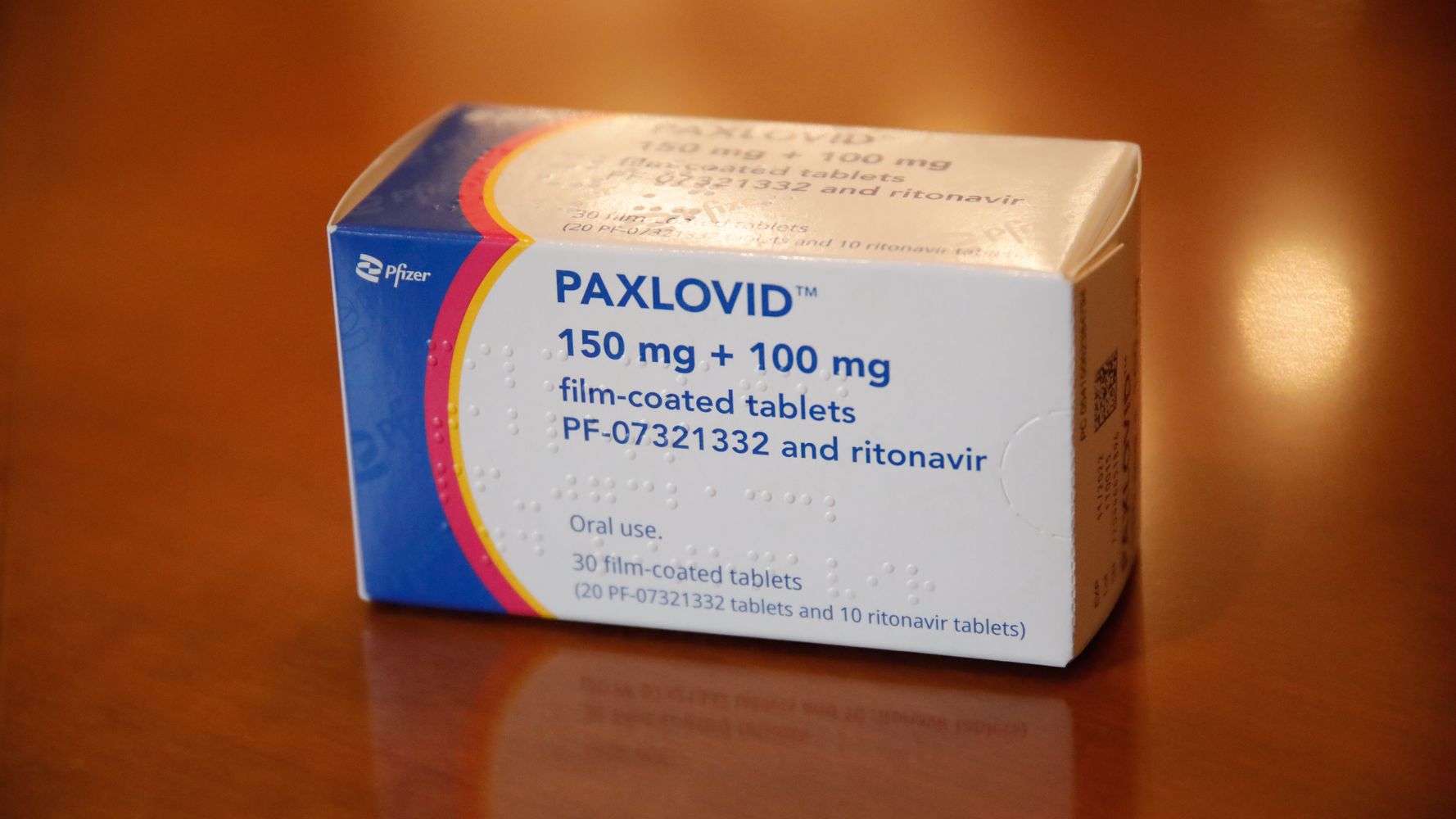Paxlovid ― the antiviral drug that has been found to decrease the risk of COVID hospitalization and death by 89% ― has been touted for those most at-risk, such as older people and those with comorbidities. However, there’s confusion about who can access the pills and how much benefit they may have.
Vice President Kamala Harris was prescribed Paxlovid earlier this week despite being asymptomatic, which raises the question of whether people with asymptomatic or mild COVID should be taking the drug.
This is where it gets complicated, as everybody who gets COVID is asymptomatic initially. Some people stay asymptomatic, while others get mild symptoms and some go on to develop severe disease. But Paxlovid is only effective if you start taking it within the first five days of illness.
“You can imagine a world where there’s many people who may be in a pre-symptomatic phase of the illness, where they consider themselves asymptomatic but they just haven’t started getting symptoms yet, but are still within that five-day window and we have to make a decision about whether or not to treat them,” said Arjun Venkatesh, an emergency medicine doctor at Yale Medicine and associate term professor at Yale School of Medicine.
Should asymptomatic people take Paxlovid?
The drug is currently recommended for high-risk patients, because it can make the biggest difference in them, said Thomas Lew, a hospitalist and clinical assistant professor of medicine at Stanford Health Care.
When started within the first few days of illness, Paxlovid can block the coronavirus from replicating itself inside your body. For those who are most at risk — including people who have cancer or kidney or lung disease, who are obese or who have received an organ transplant — this could be lifesaving.
But that doesn’t necessarily mean the drug is useless in people who aren’t high-risk or who only have mild cases. Paxlovid may still lessen those symptoms, Lew said, which in turn would mean decreasing pressure on the health care system. We also don’t yet know if Paxlovid could help protect people from long COVID, regardless of whether they had symptoms.
Unfortunately, we don’t have a way to predict exactly how the disease will play out in each person. Most doctors make the call based on a person’s risk factors and the number of days it’s been since they’ve tested positive. It’s less about whether they’re symptomatic at that point in time because it’s challenging to determine whether someone will stay completely asymptomatic or go on to develop some more moderate-to-severe symptoms in a few days.
And Paxlovid came under the spotlight this week because some people are experiencing a resurgence of symptoms ― and positive test results after being negative ― once finishing the five-day course of the pills. Doctors are looking into why this may occur, and it’s not clear whether the severity of symptoms (or lack thereof) may play a role.
Europa Press News via Getty Images
There will be enough supply to prescribe more Paxlovid
Until now, it has been nearly impossible for many ― even people who were at-risk — to get a prescription for the antiviral. That appears to be shifting, and President Joe Biden announced this week that there’s “ample supply” of the medication.
“We were very restrictive around who we used them in because we wanted to use them in people with the absolute highest risk of severe disease,” Venkatesh said. This meant that there were many people, even those moderately at risk for severe disease, who weren’t given treatment due to supply issues.
But we’re heading to a different place now. Over 630,000 packs of Paxlovid are currently available.
Many doctors are still prescribing these treatments with a scarcity mindset, Venkatesh said, when they need to adopt a more regular-treatment mindset. The recommendations can be readjusted if supply falls short again, he added.
“We should be in a spot — both nationally and in any given state — where anyone who meets criteria can get treated, but we have to rebalance our thinking on it,” Venkatesh said.
Make your decision ASAP
There is currently no definitive guidance on whether asymptomatic people should take Paxlovid. Some physicians believe all at-risk individuals with asymptomatic COVID should start Paxlovid immediately to prevent the disease from becoming severe. Others argue that Paxlovid only makes an impact in people who are already symptomatic.
Doctors do generally agree that many people will be OK without the drug. “Young, healthy, vaccinated and otherwise low-risk individuals who are not symptomatic likely do not need Paxlovid,” Lew said.
Whatever you decide, you’ll want to make that decision fast because Paxlovid works best when taken as close to the start of the infection as possible. Based on data from the clinical trials on Paxlovid and antiviral drugs used for other infectious diseases like influenza, it’s widely believed that antivirals get less effective the longer people wait to start taking them, according to Venkatesh.
If you’re confused about whether you should take Paxlovid, talk to your doctor or consult a local urgent care facility (which can be done virtually). Keep in mind that Paxlovid does interact with a handful of other medications ― including statins, protease inhibitors, certain immunosuppressants and antipsychotics ― that are typically taken for the exact conditions that put people at risk for COVID in the first place. For those who are at risk but can’t take Paxlovid due to other medications, alternative treatments are out there.
And remember: Paxlovid is not 100% effective — some people will take the full five-day course, feel better, then test positive again and require a different treatment.
“Recommendations can be very different depending on your age, medical conditions, what other medications you are taking, and if you know where and when you were exposed,” Lew said.
Experts are still learning about COVID-19. The information in this story is what was known or available as of publication, but guidance can change as scientists discover more about the virus. Please check the Centers for Disease Control and Prevention for the most updated recommendations.


